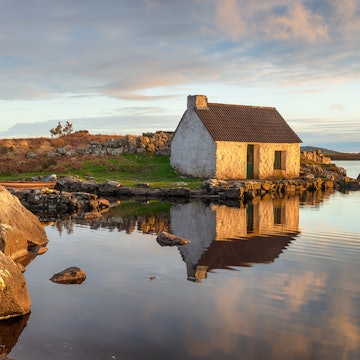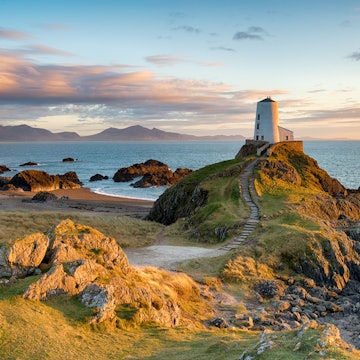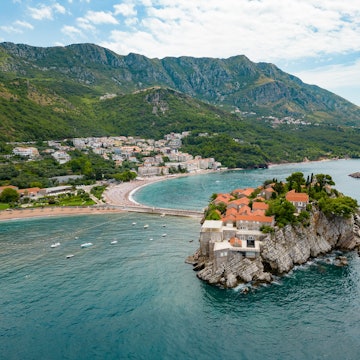

Belfast has a number of city parks that simply take you away from it all, including Belvoir Park Forest © Minchen Liang / EyeEm / Getty Images
Though Belfast is Northern Ireland’s most urbanized locale, it’s awash in green spaces and dense woodlands that evoke more classical images of the Emerald Isle.
Public parks are often former aristocratic estates donated to the city in the 20th century, while wildlife corridors and grassy glens on the outskirts have maintained their rural feel. So whether you're searching for a secluded picnic spot, a walk on the wild side, or a space to let the kids run free, at least one of Belfast’s top parks will cater to your needs.

Ormeau Park
First opened in 1871, Ormeau Park (pronounced “or-mo”) is the oldest municipal park in Belfast. It’s also one of the most prepossessing, flanked by the meandering River Lagan on its western fringe and dotted with the architectural remnants of the Victorian-era estate which once stood on the property. The flower beds and thickets of deciduous trees populating the lawns ensured Ormeau Park bagged a Green Flag Award, which recognizes the UK’s best green spaces, each year from 2011 to 2021.
At 100 acres, Ormeau is also one of the city’s largest and most varied parklands. Dog walkers and cadres of joggers roam the footpaths daily, while those of a sporty disposition make use of the basketball nets, tennis courts, football pitches, BMX track, and the adjacent Ormeau Golf Club. if you’ve no Sunday afternoon plans, grab food to go from one of the Ormeau Road’s quirky cafes and watch locals play ragtag matches of football.
Belsonic, an eclectic music festival attracting marquee headline acts, graces the park every summer. As does the Belfast Ukulele Jam band on Sunday afternoons throughout the year.

Botanic Gardens
Sitting next door to the crenelated, Gothic-inspired Lanyon Building of Queen’s University, Botanic Gardens is a park for horticulture enthusiasts. Though it has a collection of pristine lawns on which you’ll find picnickers and musicians lounging in the summer, the diverse flora on display generates a significant proportion of the footfall.
The Tropical Ravine, erupting from a small dell plunged within a Victorian storehouse, is alive with exotic-looking palms and ferns, belying their much more altitudinous Northern Irish surroundings. Visitors should also check out the cast iron and glass-walled Palm House, designed by Belfast-native Charles Lanyon in the mid-19th century. It’s one of the oldest structures of its kind, famed for the steep curvilinear roof rising above its entrance.
Inside the greenhouse, you’ll find plants that would struggle to survive in Belfast’s frigid winters, alongside sculptures and artworks.
The gardens also host the free-to-enter Ulster Museum, whose exhibits focus on local art, history, and natural sciences. You can’t miss its brooding facade, combining a brutalist extension from the 1960s with the original neoclassical foundations.

Cave Hill Country Park
Named after the five hillside caves believed to have been primitive iron mines, Cave Hill Country Park is one of Belfast’s most popular walking spots. The trails tunnel through woodland and weave over heather to the eponymous hill’s 368m (1207ft) zenith, which overlooks the city center, Belfast Lough, Harland and Wolff shipyard (the birthplace of the Titanic), and on clear days, the western tip of Scotland.
The 4.5-mile Cave Hill trail is the most scenic route, attracting plenty of New Year’s and Boxing Day walkers purging themselves of their Christmas gluttony. If you’re not up to the mildly strenuous challenge, there’s an 0.8-mile trail in the park’s lower reaches, circumnavigating the manicured grounds of Belfast Castle. You’ll still get excellent views of the city from here, while you’ve got easy access to the stone and timber castle and its cozy tavern – ideal for a few post-stroll libations.
Connswater Community Greenway
There is pride aplenty in East Belfast, and the Connswater Community Greenway is a 5.5-mile linear park connecting sites that celebrate the district’s heritage.
Constructed with a view to reviving a neglected and polluted ecosystem, the greenway’s northern end hosts CS Lewis Square – bearing the name of the homegrown author and sculptures depicting characters from his mythical realm Narnia – and Victoria Park, a haven for birdwatchers, with gulls, herons, swans, geese, mallards, and wagtail roosting there throughout the year.
In the south, the greenway bifurcates towards Orangefield Park, which comes alive with wildflowers in spring, and the wooded Cregagh Glen, winding alongside small waterfalls and a wildlife corridor towards the Castlereagh Hills.

Lady Dixon Park
Lady Edith Dixon was renowned for both her largesse and philanthropy, donating more than £100,000 to charitable causes in the early 20th century, with particular emphasis on the servicemen involved in WWI. This cemented her as a prominent figure in Northern Ireland, which was later honored with the founding of her namesake park – officially called Sir Thomas and Lady Dixon Park – donated to the city in 1959 in memory of the Lady’s late husband.
The resplendent, 128-acre greenspace is reflective of Lady Dixon’s love of botany, aesthetics, and the natural world, featuring rolling meadows bound by hedgerows, squirrel-filled woodlands, mandala-like flower gardens, and stonework water features. The Japanese-style garden, which displays landscaping techniques and design themes reminiscent of ancient waka poetry, is perhaps the most arresting section of the park.
Rose Week attracts thousands of flower-viewers each July, while the barbecue areas and picnic tables are hot commodities on those rare Northern Irish days when the sun doth shine.

Stormont Park
Stormont park, also known as “Stormont Estate”, is a public park in east Belfast with tree-shaded walking trails, flower gardens, and a children’s play park. Start the day with an early morning walk or jog along the 2.5-mile woodland trail (free adventure guidebooks are available at the main entrance), or head to the Bullfield, an enclosed area where dogs roam freely off the leash while their owners kick back at the picnic tables.
Also housed within the estate are the Stormont Parliament Buildings, the home of Northern Ireland’s devolved government since the 1998 Good Friday Agreement which established peace in the country after 30 years of sociopolitical conflict. The main building, bearing a colonnaded neoclassical facade and an imposing concave driveway, is open to the public for guided tours Monday through Friday.

Lagan Meadows
Taking its name from the River Lagan, which hugs the eastern rim of the park, Lagan Meadows is a rolling expanse of verdure lying south of Belfast city center. With few amenities, the park is perfect for walkers who want to get a flavor of wild Ireland without straying too far from the city. The Lagan Towpath trails southward from the meadows connecting Belfast to Lisburn City, around 7.5 miles away, bisecting the Lagan Valley Regional Park en route.
The scenic walks meander through copses of birch, pine, and hawthorn. They tread over moss-smothered steps connecting forest glades and alongside the duck-filled Lagan’s lower reaches. There are plenty of secluded picnic spots when the weather is behaving, and improved water quality projects and recuperation of the river ecosystem mean fishing opportunities are available on some sections of the river – see seasonal calendar and permit info for details.
Belvoir Park Forest
Belvoir Park Forest (pronounced “Beaver”) is a richly wooded area connected to the trimmed fairways of Belvoir Golf Club and a diverse arboretum first planted in 1839. Set within the Lagan Valley, the open-to-the-public forest is characterized by cloistered walking trails, pervaded by birds conversing in their twittering tongues and the crunch of twigs and leaves underfoot.
This perceived isolation makes Belvoir Park Forest feel as old as time, but it hosts more recent historical sites too. These include a WWII air-raid shelter, now usurped by vegetation, and a 12th-century Norman motte, where once stood a timber-and-earth bailey used to survey the surrounding land and mount defenses against invaders.














